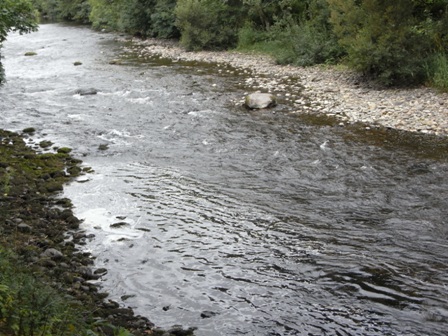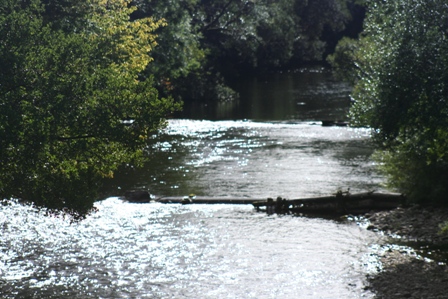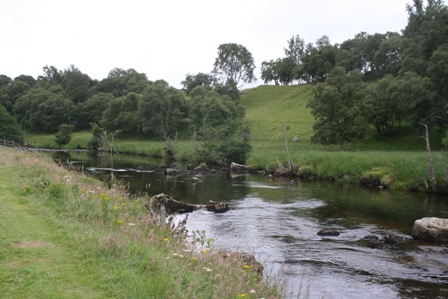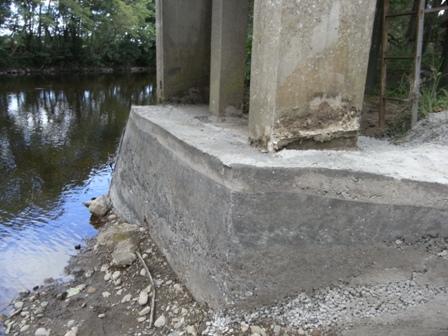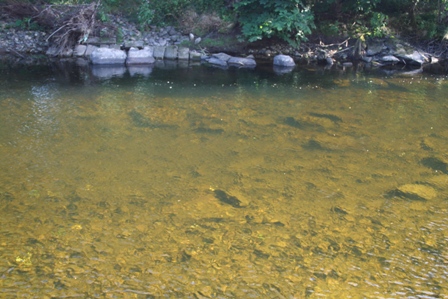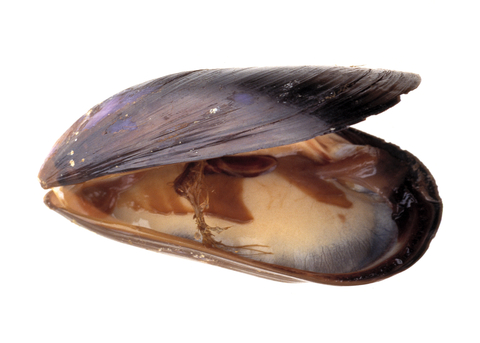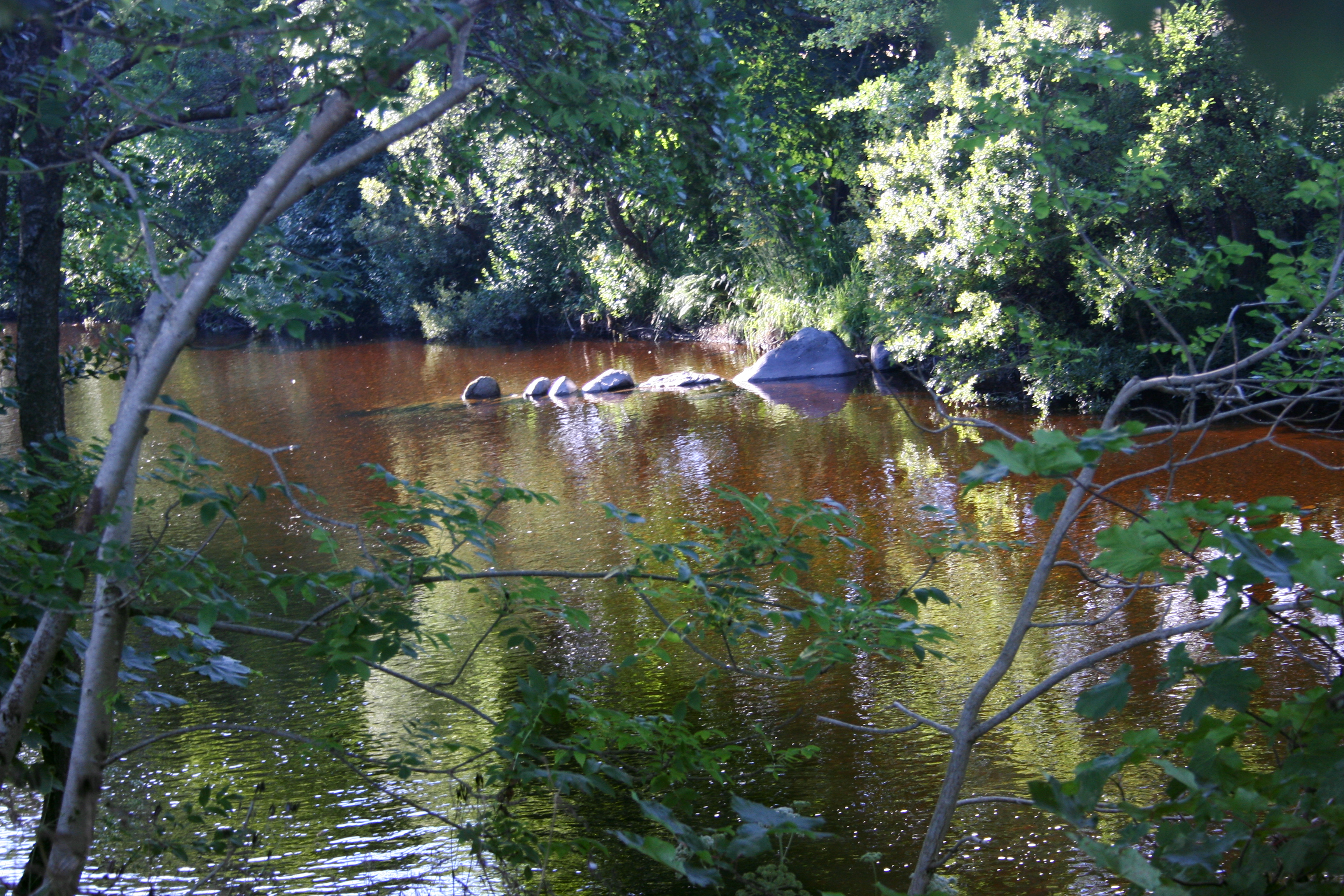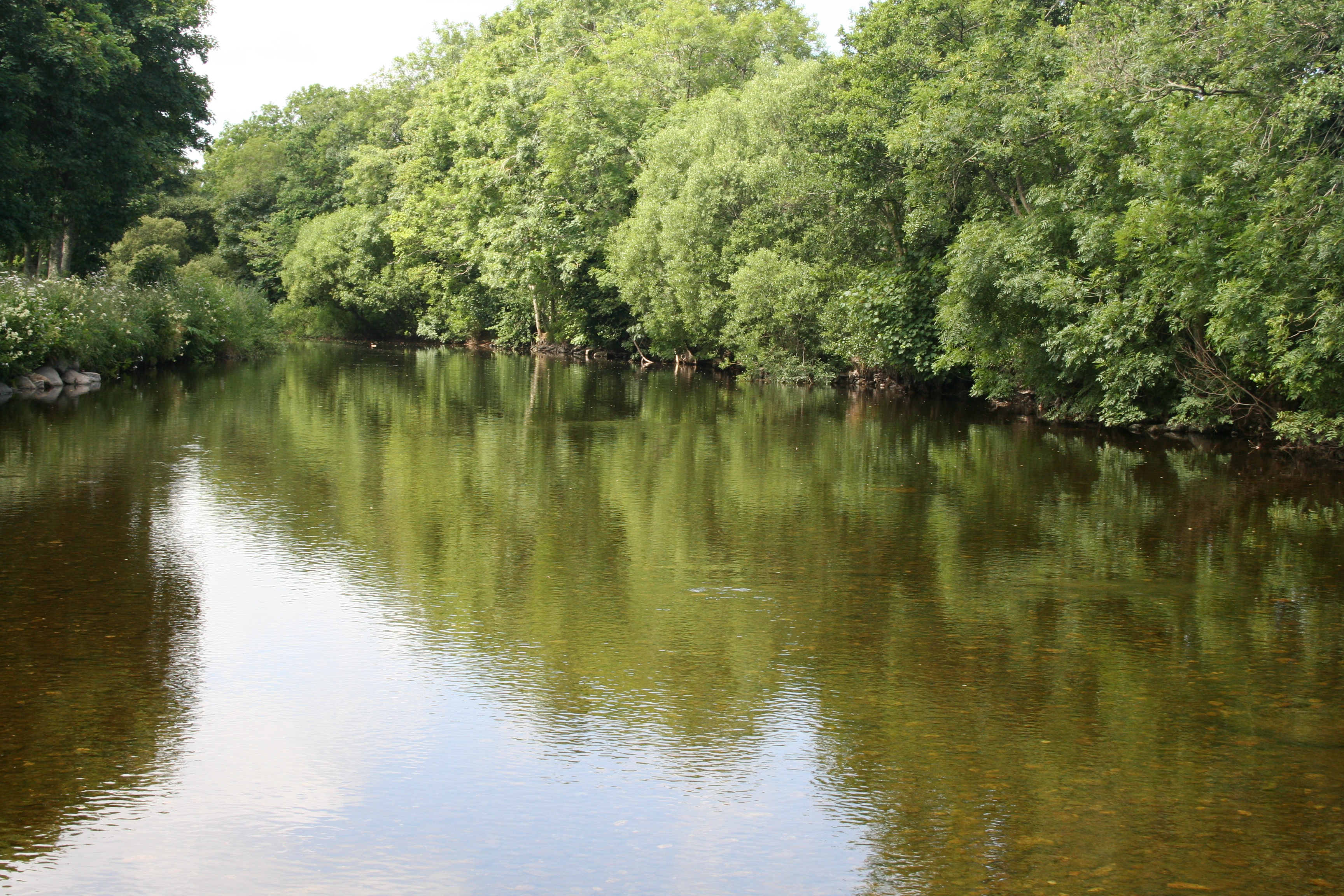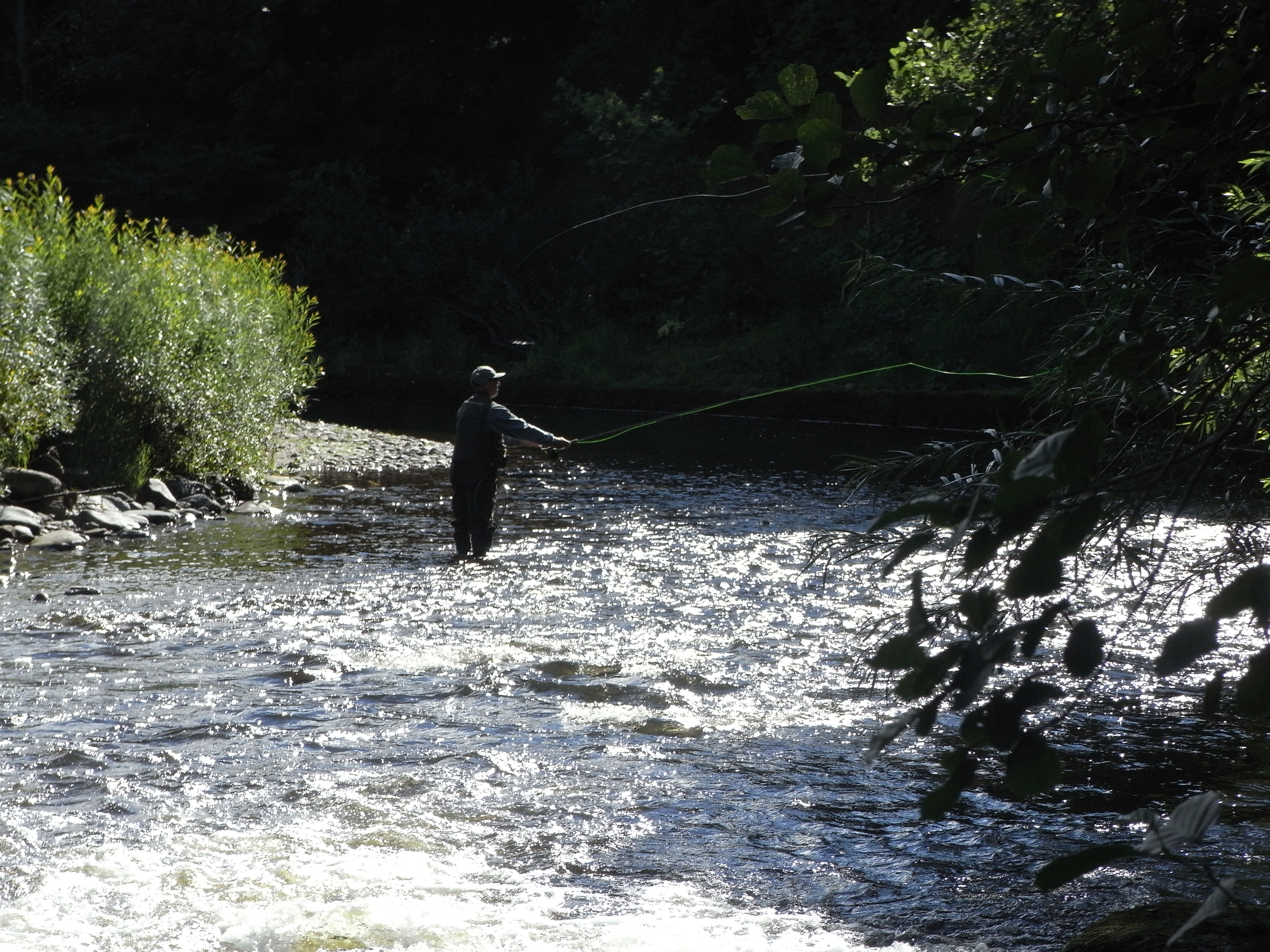These bulletin blogs represent news about Finavon and the South Esk, and my views as a riparian owner. While I may digress at times to write about other places, these are not the views of any other organisation, nor are they designed to promote the interests of any individual or organisation other than Finavon Castle Water and factors affecting the fishery. Tony Andrews
There have been a few fish caught by intrepid tenants during September, but it has been hard going. Despite the low water and reluctance of fish to show themselves, or move to the fly, we have seen fish in the main pools. As usual Melgund has held a few MSW salmon throughout the three months of low water. From the Aqueduct it has been possible to observe both grilse and large salmon, plus a few sea trout in the one to three pounds weights category, and last week we saw a reasonably fresh cock salmon of about 14lbs lying stationary just above the big lie boulder downstream of the aqueduct. Other pools such as Tyndals, Willows and Red Brae have all held fish – both salmon and sea trout – in varying numbers throughout the summer.
The webcam boulder at Tyndals (Milton Beat) in summer low conditions. The water level has been here, or here abouts, all summer. In fact there has been a reasonable flow all summer long, albeit a low water flow.
It is natural that some summers are dry, as this summer has been. The fact is that this season has been the driest in terms of flow in the South Esk for quite a number of years. You only have to look at the SEPA graphs in the river levels section of the Fishpal website to appreciate how short of water the river has been during this summer. The result has been FCW’s worst catch numbers for 30 years: a reminder to us all that we are dealing with a wild resource that is subject to the vagaries of weather conditions.
This photograph was taken from the Aqueduct while looking into the bright sun of early afternoon in September. It shows the streamy water of Beeches Pool in very lowwater, one of the best sections of FCW for salmon and sea trout in all but flood conditions. The lie upstream of the Aqueduct (just out of the foot of this photo) is where John Wood caught the first spring salmon of 2013 – a beautiful 17lbs fish – and where in 2012 Alec Towns lost a very big fish (est 30lbs) when his rod shattered after a 40 minute fight.
I feel some reassurance that there are uncertainties when dealing with the natural world. I would rather have it that way than predictable numbers of fish caught in a stocked river or loch. Managing a wild fishery is full of uncertainties. The best we can do is to make sure that the habitats over which we have control are in the best possible condition for returning adult fish, spawning and juveniles.
This is the South Esk in Glen Clova, just downstream of Gella Bridge in low water conditions. and the Rottal Burn Project are examples of efforts being made by the Esk Rivers and Fisheries Trust to improve the environment in this much abused part of the upper catchment.
In that context the summer has been a good time to improve the fishery by carrying out minor manual repairs to eroded banks, eradicating most of the giant hogweed, Japanese knotweed and a small amount of Himsalayan balsam. Filling in the gaps in boulder groynes with small stones to trap silt and provide placesto plant willow pegs in the autumn and winter has been an important part of our maintenance programme. The low water has also enabled us to remove debris and other rubbish from the bed of the river: pieces of wire fencing, bottles, tin cans, bits of cars and waterlogged timbers trapped against midstream boulders have all been removed. Other maintenance has included safety checks on bridges and huts, repairs to flood damaged infrastructure, wood protection applied, and the usual round of grass cutting and cutting back intruding branches on banks and along access tracks.
The photo above shows the repair to the south support of the Haughs Aqueduct, which we should now describe as a ‘footbridge’ after FCW acquired it last year. It used to be the pipe bridge that brought water from Glen Quiech to Arbroath. The water supply has been rationalised and the aqueduct is now redundant. It is a well engineered 1950s structure which provides safe & private access across the river at Haughs for anglers. To take this photo the water level had to be very low, so there have been plenty of opportunities this summer!
We now await water and maybe some late autumn fish. If neither arrives it really doesn’t matter: there’s always next season! What I can say is that the river and its surroundings at Finavon have never been in better condition, and I keep reminding myself that our freshwater mussels are recovering – and that surely is a fine indicator of success!
TA 21/9
